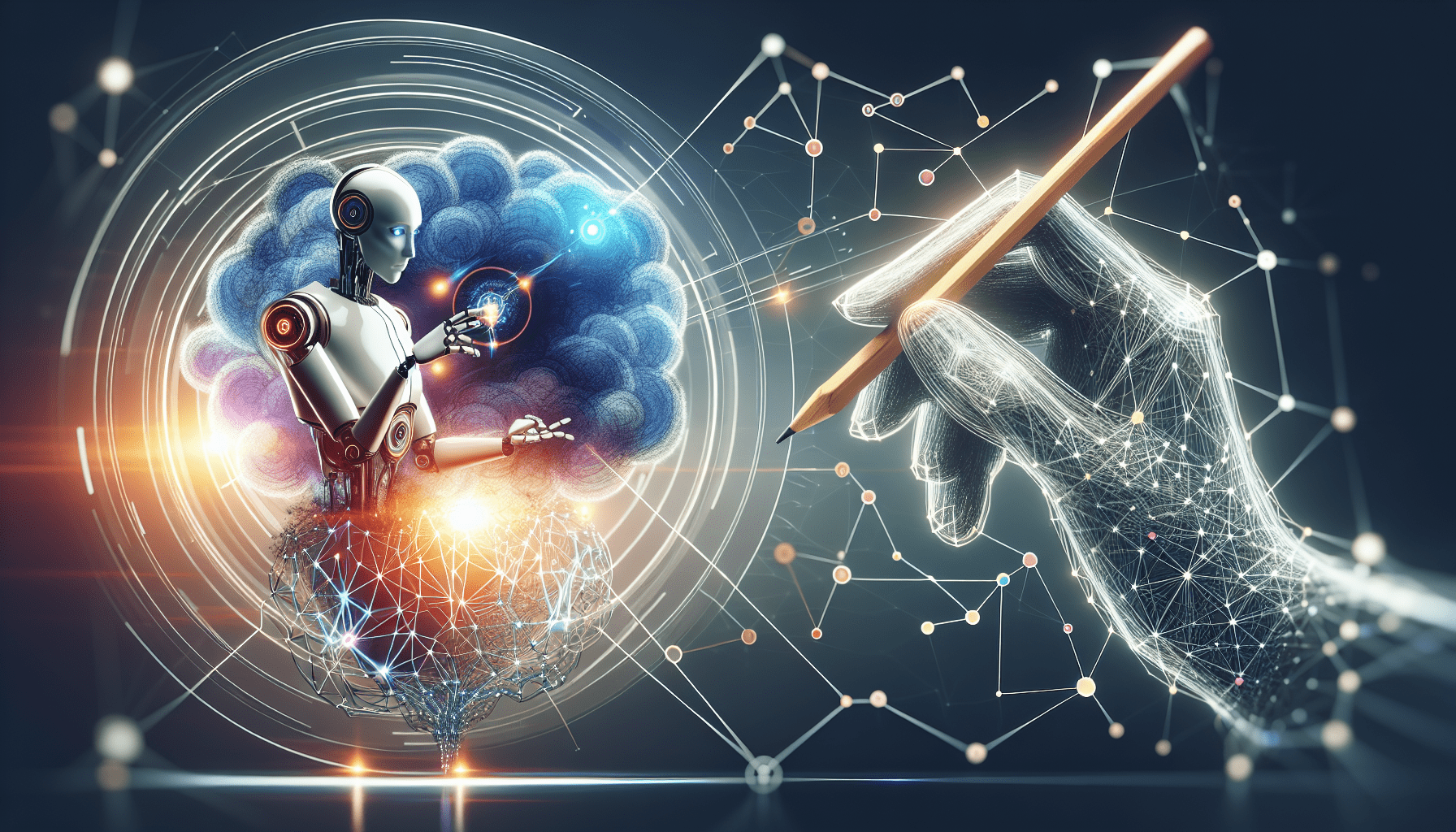So, you’re interested in learning AI, but you’re not sure where to start? Don’t worry, we’ve got you covered! In this beginner’s guide, we’ll take you on a friendly journey through the fascinating world of Artificial Intelligence. From understanding the basic concepts to exploring real-world applications, we’ll break it down for you in a way that’s easy to grasp. Whether you have a technical background or not, get ready to embark on an exciting adventure towards mastering AI. Let’s dive in!
Understanding the Basics of AI
Defining Artificial Intelligence
Artificial Intelligence, or AI, is a field of computer science that focuses on creating intelligent machines capable of performing tasks that would typically require human intelligence. It involves developing algorithms and models that enable machines to learn from data, recognize patterns, and make decisions or predictions. AI strives to mimic human cognitive abilities such as problem-solving, natural language processing, image recognition, and decision-making.
Different Types of AI
There are different types of AI that cater to various applications and use cases. Narrow AI, also known as weak AI, is designed to perform specific tasks with high proficiency, such as voice recognition or image classification. General AI, on the other hand, refers to the hypothetical AI system that possesses the ability to understand, learn, and apply knowledge across various domains, similar to human intelligence.
Additionally, there is Machine Learning (ML), which is a subfield of AI that focuses on enabling machines to learn from data without being explicitly programmed. ML algorithms are capable of automatically identifying patterns and making predictions or decisions based on the given input and desired output. Another subfield is Deep Learning (DL), which utilizes artificial neural networks to learn and make sense of complex patterns and structures in data, often achieving state-of-the-art performance in tasks like image and speech recognition.
AI Applications in Real Life
AI has become increasingly prevalent in various aspects of everyday life. In healthcare, AI is being used to analyze medical images, detect diseases, and assist with diagnosis. In the finance and banking industry, AI algorithms are utilized for fraud detection, credit scoring, and portfolio management. Transportation systems employ AI-based algorithms to optimize traffic flow, predict travel times, and even develop autonomous vehicles. AI is also widely used in marketing and sales for customer segmentation, recommendation systems, and personalized advertising.
Building a Foundation
Required Knowledge and Skills
To start learning AI, having a solid foundation in mathematics and programming is crucial. Understanding concepts such as linear algebra, calculus, probability, and statistics will provide you with the necessary tools to comprehend the underlying principles of AI algorithms and models. Python is among the most commonly used programming languages for AI development, so having a good grasp of its fundamentals is highly beneficial.
Mathematics for AI
Mathematics forms the backbone of AI. Knowledge of linear algebra is fundamental for understanding the operations performed on data matrices, which are prevalent in ML algorithms. Calculus is essential for optimization algorithms used in ML. Probability and statistics are utilized in modeling uncertainty and making informed decisions based on data. Although an in-depth knowledge of these areas is not mandatory for beginners, familiarizing yourself with the basics will help you quickly grasp AI concepts.
Programming Languages for AI
Python is the preferred language for AI due to its simplicity, vast ecosystem of libraries, and strong community support. Python libraries such as NumPy, Pandas, and SciPy provide powerful tools for data manipulation, analysis, and scientific computing. TensorFlow and PyTorch are popular frameworks for implementing neural networks and deep learning models in Python. Understanding the fundamentals of Python programming will enable you to effectively utilize these libraries and frameworks.

Choosing AI Learning Resources
Online Courses
Online courses are an excellent way to learn AI at your own pace. Platforms like Coursera, Udacity, and edX offer comprehensive AI courses designed by renowned experts in the field. These courses cover a wide range of topics, including machine learning, neural networks, and AI applications. They often include video lectures, hands-on assignments, and practical projects to enhance your understanding and allow you to apply what you’ve learned.
Books and Tutorials
Books and tutorials provide in-depth knowledge and insights into AI concepts and techniques. Some popular books include “Artificial Intelligence: A Modern Approach” by Stuart Russell and Peter Norvig, “Deep Learning” by Ian Goodfellow, Yoshua Bengio, and Aaron Courville, and “Pattern Recognition and Machine Learning” by Christopher Bishop. Online tutorials, blogs, and YouTube channels also provide valuable resources for learning AI, often focusing on specific topics or algorithms.
AI Development Platforms
AI development platforms offer ready-to-use tools, frameworks, and environments for building AI applications. Platforms like Google Cloud AI Platform, Microsoft Azure, and Amazon AWS provide a range of services, including pre-trained models, automated machine learning, and infrastructure for running AI algorithms at scale. Utilizing these platforms can simplify the development process and allow you to focus on the core concepts and algorithms without getting bogged down in infrastructure setup.
Getting Started with Machine Learning
Introduction to Machine Learning
Machine Learning is a key subfield of AI that focuses on algorithms capable of learning from data and making predictions or decisions without being explicitly programmed. It involves identifying patterns in data and building models that can recognize and generalize from these patterns. Supervised learning, unsupervised learning, and reinforcement learning are the three fundamental categories of ML.
Supervised Learning
Supervised learning involves training a model using labeled data, where the input data is associated with corresponding correct output labels. The model learns to map input data to the correct output labels, enabling it to generalize and make predictions on unseen data. Common supervised learning algorithms include linear regression, logistic regression, decision trees, and support vector machines.
Unsupervised Learning
Unsupervised learning aims to find patterns or structures in unlabeled data. Without any predefined labels, the algorithm discovers hidden relationships or clusters in the data. Clustering algorithms, such as K-means and hierarchical clustering, and dimensionality reduction techniques like Principal Component Analysis (PCA) and t-SNE are commonly used in unsupervised learning.
Reinforcement Learning
Reinforcement learning involves an agent learning optimal actions by interacting with an environment. The agent receives feedback in the form of rewards or punishments based on its actions, allowing it to learn from trial and error. Reinforcement learning is utilized in tasks requiring sequential decision-making, such as game playing and robotics. Q-learning and Deep Q Networks (DQNs) are popular reinforcement learning algorithms.

Exploring Neural Networks
Understanding Artificial Neural Networks
Artificial Neural Networks (ANNs) draw inspiration from biological neural networks in the human brain. ANNs are composed of interconnected nodes, called neurons, organized into layers. Information flows through the network, with each neuron performing a weighted, non-linear operation on its inputs. By adjusting the weight values, ANNs can learn complex relationships between the input and output data.
Types of Neural Networks
There are various types of neural networks designed for specific tasks and data structures. Feedforward Neural Networks (FNNs) are the simplest form, where information flows in one direction without loops. Convolutional Neural Networks (CNNs) excel in image and video processing tasks, utilizing specialized layers for feature extraction. Recurrent Neural Networks (RNNs) handle sequential data, considering temporal dependencies, and are useful in tasks like language modeling and speech recognition.
Deep Learning and Convolutional Neural Networks
Deep Learning refers to neural networks with multiple hidden layers, allowing the model to learn hierarchical representations of the input data. Deep Learning architectures, often built using Convolutional Neural Networks (CNNs), revolutionized computer vision tasks through their ability to extract meaningful features from images automatically. CNNs consist of layers specialized in convolution, pooling, and nonlinear activation, effectively capturing spatial features in images.
Recurrent Neural Networks
Recurrent Neural Networks (RNNs) are designed for processing sequential data, where the previous output is used as an input for the current step. This enables RNNs to capture dependencies over time, making them well-suited for tasks such as natural language processing, time series analysis, and speech recognition. Long Short-Term Memory (LSTM) and Gated Recurrent Unit (GRU) are popular RNN variants that mitigate the vanishing gradient problem and allow modeling long-term dependencies.
Data Preparation and Preprocessing
Data Collection and Cleaning
The quality and relevance of data profoundly impact the performance of AI models. Collecting and cleaning data involves selecting appropriate sources, collecting relevant data points, and removing any inconsistencies or errors. Techniques such as data fusion, data integration, and outlier detection are utilized to ensure the reliability and accuracy of the data. Careful data cleaning is crucial to avoid biased or misleading results.
Feature Selection and Engineering
Feature selection involves identifying the most relevant features from the available data that are crucial for model performance. Reducing the dimensionality of data by selecting informative features can improve training efficiency and decrease the risk of overfitting. Feature engineering is the process of creating new features from existing ones to capture additional patterns or relationships, often using domain knowledge. Proper feature selection and engineering enhance the model’s predictive power.
Normalization and Scaling
Normalization and scaling techniques transform the data to a specific range or distribution to ensure fair comparisons and prevent biases. Common approaches include standardization, where data is scaled to have zero mean and unit variance, and min-max scaling, which linearly scales data to a specific range. These techniques help ensure that features with different scales or units do not dominate the training process, leading to more accurate and stable models.
Handling Missing Data
Missing data is a common challenge in real-world datasets. To handle missing data, techniques such as deletion, imputation, or advanced methods like multiple imputation can be employed. Deletion involves removing data points with missing values, which may lead to information loss. Imputation fills in missing values using statistical methods such as mean imputation or regression imputation, based on relationships observed in the remaining data. Care must be taken to choose the appropriate technique and minimize bias introduced by missing data.

Model Training and Evaluation
Splitting Data into Training and Testing Sets
When training AI models, it is necessary to split the available data into separate training and testing sets. The training set is used to teach the model the underlying patterns and relationships in the data, while the testing set is used to evaluate the model’s performance on unseen data. A common practice is to use a 70-30 or 80-20 split, where a majority of the data is used for training, and the remaining portion is used for evaluation.
Choosing Evaluation Metrics
Evaluation metrics quantify the performance of AI models and help assess their suitability for the intended task. The choice of metrics depends on the nature of the problem. For classification tasks, metrics such as accuracy, precision, recall, and F1-score measure the model’s ability to predict class labels correctly. In regression tasks, metrics like mean squared error (MSE) or root mean squared error (RMSE) evaluate the model’s predictive accuracy on continuous values.
Training and Fine-tuning Models
Training AI models involves optimizing their parameters to minimize the error or loss function. This process typically entails feeding the data through the model, comparing the model’s predicted output with the true output, and adjusting the parameters using optimization algorithms such as gradient descent. Fine-tuning involves tweaking the model’s hyperparameters, such as learning rate or regularization strength, to improve its performance and generalization capabilities.
Evaluating Model Performance
After training the model, it is essential to evaluate its performance using the testing set. Performance metrics computed on the testing set provide insights into how well the model generalizes to unseen data. These metrics can reveal whether the model is overfitting, underfitting, or achieving the desired level of performance. Iteratively evaluating the model’s performance allows for necessary adjustments to enhance its accuracy and reliability.
Working with AI Libraries and Frameworks
Popular AI Libraries and Frameworks
AI libraries and frameworks simplify the implementation of algorithms and models. TensorFlow, developed by Google, is a widely-used framework for building and training neural networks. PyTorch, developed by Facebook, provides a dynamic computational graph and extensive support for deep learning models. Scikit-learn is a popular machine learning library in Python, offering various algorithms, tools, and utilities for ML tasks. Keras, built on top of TensorFlow, provides a high-level interface for building neural networks.
Hands-on Exercises and Projects
Hands-on exercises and projects play a crucial role in reinforcing AI concepts and enhancing practical skills. Implementing algorithms and models from scratch, or replicating existing implementations, can provide valuable insights into their inner workings. Projects that involve solving real-world problems or participating in machine learning competitions (such as Kaggle) offer opportunities to apply AI techniques in a practical setting and gain hands-on experience working with real data.
Implementing AI Algorithms
Implementing AI algorithms involves applying the theoretical knowledge of AI concepts to solve specific problems. This could include implementing regression or classification algorithms, building deep learning architectures, or designing recommendation systems. Utilizing libraries and frameworks such as TensorFlow, PyTorch, or Scikit-learn can simplify the implementation process by providing pre-existing functions, structures, and utilities.

Keeping Up with AI Advancements
Following AI Research and News
AI is an ever-evolving field with constant advancements and breakthroughs. Following AI research papers, blogs, and news sources is crucial to stay updated with the latest developments. Resources like arXiv, Medium, and AI-focused publications provide insights into cutting-edge research, novel algorithms, and emerging applications. Keeping up with the latest trends and techniques ensures that your knowledge remains relevant and up-to-date.
Attending AI Conferences and Meetups
Attending AI conferences and meetups offers opportunities to network with industry experts, researchers, and fellow enthusiasts. Conferences like NeurIPS, AAAI, and CVPR provide platforms for sharing knowledge, discussing recent advancements, and gaining exposure to various AI domains. Local meetups and workshops also offer chances to engage with the AI community, participate in discussions, and learn from experienced practitioners through presentations and hands-on sessions.
Engaging in AI Communities
Joining AI communities, both online and offline, fosters collaboration, learning, and knowledge sharing. Online platforms like Reddit, Stack Exchange, and AI-focused forums provide spaces for asking questions, seeking guidance, and exchanging ideas with like-minded individuals. Offline AI communities, such as data science or machine learning meetups, enable face-to-face interactions, group discussions, and collaborative projects. Engaging with these communities expands your network and helps you learn from others’ experiences.
Continuous Learning and Skill Enhancement
AI is a rapidly evolving field, and continuous learning is essential for staying relevant and adapting to new challenges. Explore advanced topics, such as Generative Adversarial Networks (GANs), Natural Language Processing (NLP), or Reinforcement Learning algorithms, to deepen your AI knowledge. Additionally, acquiring skills in related areas like big data processing, cloud computing, or distributed systems can enhance your ability to tackle complex AI projects effectively.
Real World AI Applications
AI in Healthcare
AI has made significant advancements in healthcare, ranging from disease diagnosis to personalized medicine. Machine learning algorithms can analyze medical imaging data, such as X-rays, MRIs, or CT scans, to detect abnormalities or assist with early disease detection. Natural Language Processing (NLP) enables AI systems to extract and summarize medical information from patient records, aiding in diagnosis and treatment planning. Predictive modeling combines patients’ characteristics and medical history to estimate disease risks and design personalized treatment plans.
AI in Finance and Banking
AI is transforming the finance and banking industry by automating tasks, improving fraud detection, and enhancing customer experience. Trading algorithms based on machine learning analyze market data and make automated investment decisions. AI-powered chatbots provide personalized customer support and streamline banking operations. Fraud detection systems employ ML models to detect suspicious transactions and identify potential fraudulent activities. Credit scoring models leverage AI to assess creditworthiness and make accurate lending decisions.
AI in Transportation
AI plays a prominent role in transforming transportation systems and paving the way for autonomous vehicles. Machine Learning algorithms analyze traffic patterns and predict traffic congestion, enabling more efficient route planning and traffic management. Computer vision-based AI systems are used in self-driving cars to recognize objects, pedestrians, and traffic signs to navigate safely. AI algorithms optimize public transportation schedules, predicting ridership demand and reducing waiting times.
AI in Marketing and Sales
AI enables businesses to personalize marketing campaigns and improve customer targeting. Recommendation systems analyze user behavior and preferences to suggest relevant products or content. Sentiment analysis algorithms process and understand customer sentiment from social media and customer reviews, helping businesses gauge public opinion. Predictive analytics algorithms forecast customer behavior and identify opportunities for upselling or cross-selling, optimizing marketing strategies. AI-driven chatbots are employed to deliver personalized assistance and handling customer inquiries promptly.
In conclusion, learning AI requires a foundation in mathematics and programming, a choice of appropriate resources, and practical experience in implementing and fine-tuning AI algorithms. The field of AI offers exciting opportunities in various domains like healthcare, finance, transportation, and marketing. By staying updated with the latest advancements, engaging in AI communities, and continuously enhancing your skills, you can embark on a journey to become proficient in AI and contribute to the development and application of intelligent technologies.







Leave a Reply